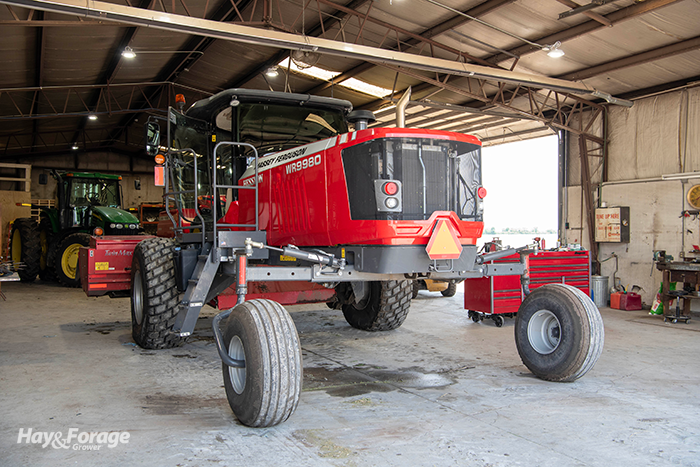
First frosts and freezes suggest the need for heavier Carhartt attire and mark the cessation of plant growth, if not life. Alfalfa will often slow or cease growing before a frost or hard freeze, and it’s during this period of stagnated growth that offers an opportunity for a final harvest.
Conventional wisdom is that this no-growth period is a safer time to harvest than the previous four to six weeks of moderate regrowth. With the late-fall cut, plants are unlikely to use stored root reserves to initiate new regrowth.
It’s been my experience that farmers often cite one of three primary reasons for wanting to cut this so-called “Halloween hay.”
1. They can’t bear to waste perfectly good forage.
In the case where favorable weather has contributed to significant fall growth, it’s hard to leave an apparent high-yielding, high-quality crop out in the field. However, the reality is that late fall-cut alfalfa is rarely, if ever, high yielding.
Yes, the crop can sometimes be tall, but the stems are usually small and there are fewer of them. What looks like a high-yield crop usually shrinks to nearly nothing when put into a swath or windrow. Having measured yields from many such fields, I have rarely seen yields exceed 0.5 tons per acre, and usually it’s much less. This makes for expensive forage when harvest costs are considered.
On the flip side, late fall-cut forage is almost always excellent quality. With the extended cool temperatures, there is low fiber deposition and fiber digestibility stays high.
2. They think the stand will smother out if not cut.
There’s been a long-held concern by some that fall alfalfa growth will smother and kill a stand over winter. This simply does not happen with a legume such as alfalfa. Rather, leaves freeze and eventually drop off the plant. Stems, for the most part, stand erect. The old, fall aftermath growth may impact forage quality in the next year’s first cutting, but if harvested early enough, the reduction in quality is minimal.
3. They need the feed.
Following a year of severe winterkill or drought, sometimes alfalfa is cut in late fall simply to meet a need for additional forage. It’s difficult to be critical of this thinking, but it will be expensive forage.
There are risks
Though the risk to cut alfalfa in the late fall has proven to be less than when regrowth potential is high, the practice is not without some downsides. Already mentioned is the fact that yields are typically low; they will be even lower if the cutting height is raised as is often recommended for a late-fall cut.
Also consider that fields cut in the late fall generally break dormancy later during the following spring and have a lower first-cut yield compared to not being fall cut. The gain in fall yield is about equal to the loss in spring yield. This is not to say that the fields are winter injured but rather less vigorous come spring.
Leaving the fall aftermath growth over winter is beneficial to not just catching and holding snow cover, but it also has the effect of moderating soil temperature fluctuations during winter and early spring. It is extreme soil temperature fluctuations that may cause alfalfa to break dormancy too early or cause plant heaving.
Finally, consider the condition of the alfalfa stand before taking a late-fall cut. If it’s already been stressed by intensive cutting, pest issues, or low soil fertility, stress from an additional cutting will accelerate stand decline.
All factors considered, the need for feed prior to the next year’s harvest may be the only good reason to cut alfalfa over the next month.

